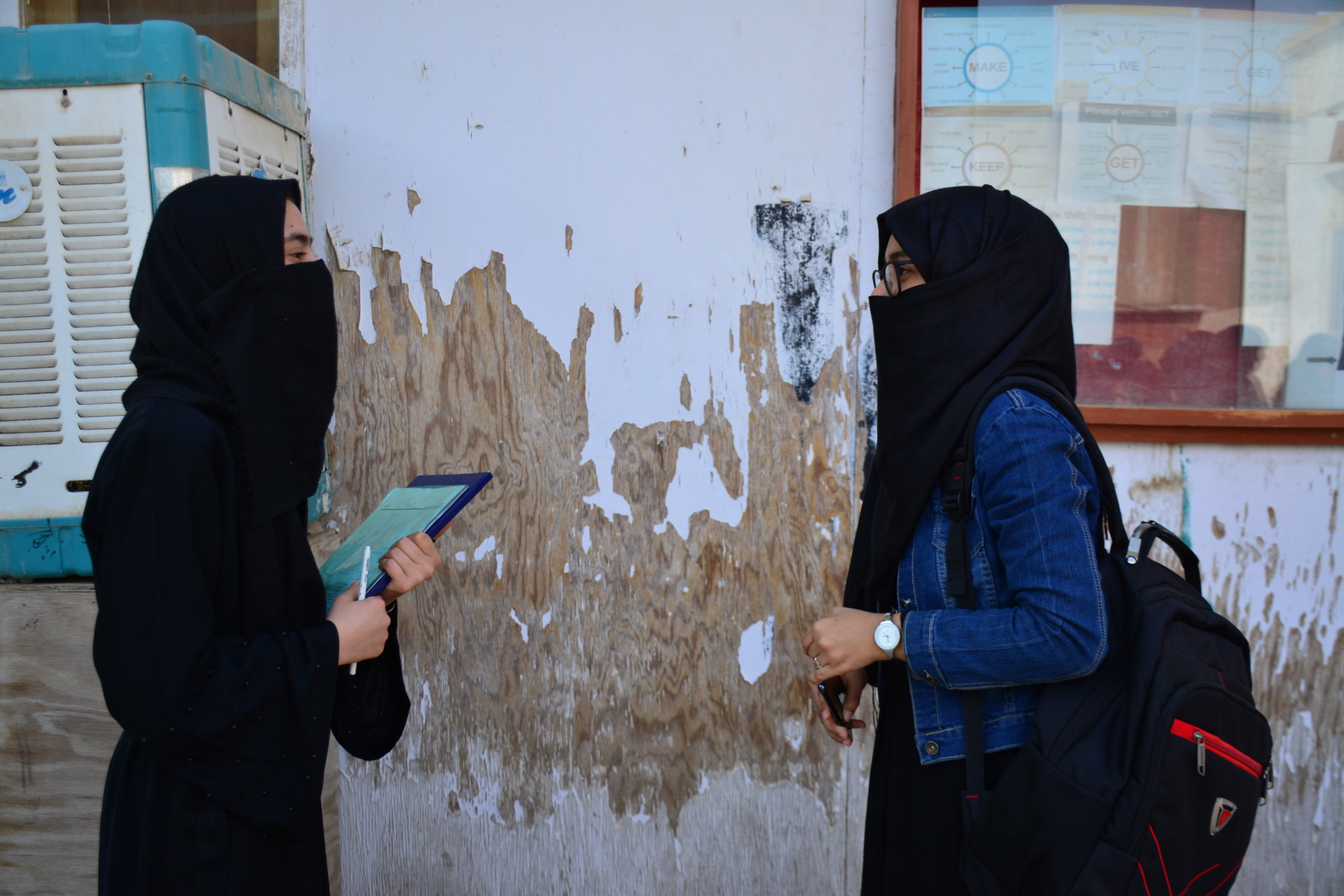The broad, green mulberry tree inside the perimeter of the Kandahar Institute of Modern Studies (KIMS) is loaded with green and red fruit, which will soon ripen to black. Under its shade stand girls in their black or blue headscarves, some covering their faces with surgical masks. On the wall behind them, the institute’s name is imprinted in bold, light-green letters. The girls are discussing their test results, which they received some time ago. But the conversation is not in Pashto or Dari. They are speaking with each other in American-accented English.
KIMS was founded by Ehsanullah Ehsan in 2007, though he has been educating Kandahari women since the U.S.-led forces toppled the Taliban in 2001. Before that, he was running an institute to educate girls in Pakistan. KIMS is an employment-oriented, private, higher education center where teachers from the United States and Canada have been teaching English and management courses to students via Skype for free.
The institute is enclosed by high walls with a metal door, and an old guard welcomes the buses and cars that ferry female students to and from its premises. The transportation is arranged by the center so that students can avoid any harassment on the streets in the deeply patriarchal society.
“Kandahar is the most dangerous province for girls,” said Fatima from behind her black veil. “The boys harass the girls, and girls don’t feel secure,” explained Fatima, an 11th-grade student, who had a hard time persuading her parents to allow her to continue her education, especially when the Taliban were threatening to shut down schools and universities. “We have the right to education, and if we want to improve our education, we must come here, even if it’s so dangerous now in Kandahar,” she said. “We must come.”
Fariha, a non-hijabi-wearing student from KIMS, added: “We have the girl power; we have women power. We can do everything. We will change the world.”
From school-age children to university students to married women in their 20s and 30s, they all come here to study English, computing and business. The classes run in two shifts: Female students come in the morning and male students in the afternoon. The institute has about 1,300 students, half of them female.
Kandahar is the second-largest city in Afghanistan after Kabul, home to more than 650,000 people. Formerly known as Alexandria Arachosia, it was named after Alexander the Great, who founded it in the winter of 329 BCE. Over the centuries, great empires like Greece, Maurya, Mongol, Mughal, Safavid and today’s superpowers have fought to occupy and rule the province due to its strategic location. In 1747, the Afghan ruler Ahmad Shah Durrani laid the foundations of modern Kandahar and made it his capital city. Kandahar is connected to Herat to the northwest, Kabul to the northeast and Quetta in neighboring Pakistan.
In the 1960s and ’70s, Kandahar was part of the hippie trail that included Pakistan, India, Nepal and Tibet. Some smuggled back hash to the West inside sealed jam tins, which became famous as Kandahar jam. But with the disastrous Soviet invasion of Afghanistan in 1979, the hippie trail was closed forever. The new generation of Westerners arrived here with guns and bombs.
After nine years of war and the estimated death of 1 million civilians, the Soviet military withdrew from Afghanistan in 1988-89. A civil war between the Soviet-supported communist government in Kabul and Mujahideen followed, which lasted until 1992. As the Mujahideen turned their guns on one another, a movement of religious students — the Taliban — rose up near Kandahar. It was in the village of Sangsar, some 40 kilometers (25 miles) from the city, that the Taliban were founded in 1994 by Mullah Mohammed Omar, who declared himself Amir ul-Mumineen, leader of the faithful. The Taliban gained territory and captured Kabul in 1996, but they made Kandahar their capital. The group was toppled by U.S.-led NATO forces during Operation Enduring Freedom in 2001.
With the withdrawal of U.S. troops from Afghanistan, the Taliban are making battlefield gains and are now standing at the doors of Kandahar. The collective memory of the Taliban’s harsh rules imposed on Afghan society during their earlier rule is worrying many Afghans, especially among younger generations living in the country’s urban centers. An entire generation was born under the foreign occupation and has seen a country with improved roads, better education and health care facilities, as well as new opportunities.
In a statement in June this year, the head of the Taliban’s political office, Mullah Abdul Ghani Baradar, said that the movement would commit to “accommodating all rights of citizens” in Afghanistan “whether they are male or female.” In an interview, the group’s spokesperson, Suhail Shaheen, made assurances that in the new government women will be allowed to work, go to school and participate in politics, as long as they wear the hijab.
Few of the female students at KIMS trust these promises, however. And the fear is genuine.
Half of the female students are staying home because their families are afraid of the Taliban.
“I hope they [the Taliban] don’t rule over Kandahar because if they return, then we won’t have any chance to continue our education,” Fatima said. “Half of the female students are staying home because their families are afraid of the Taliban,” she added.
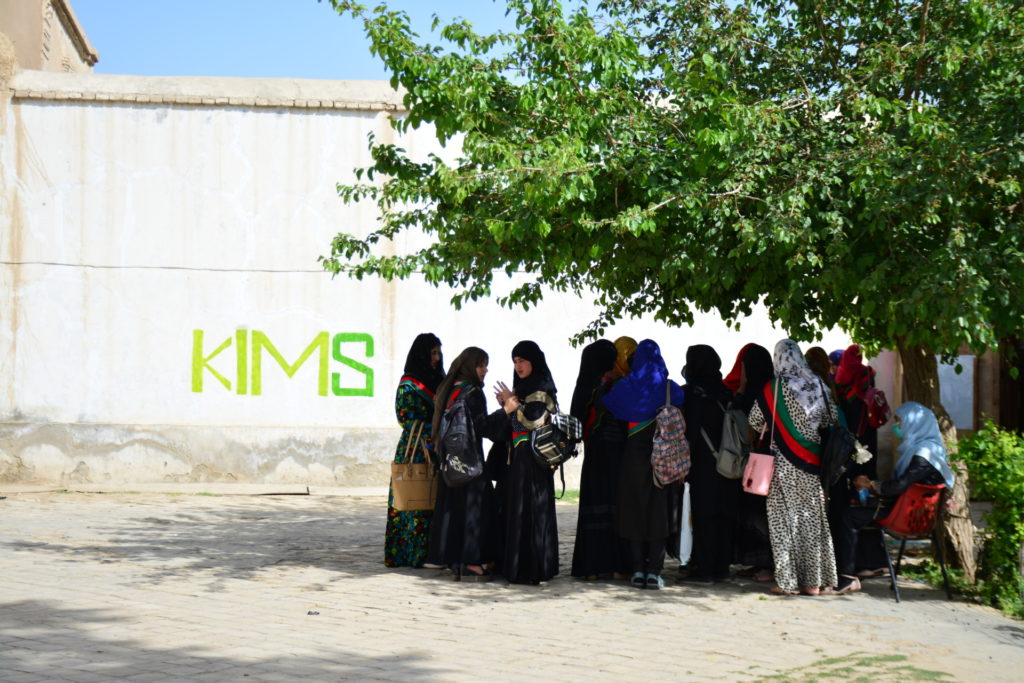
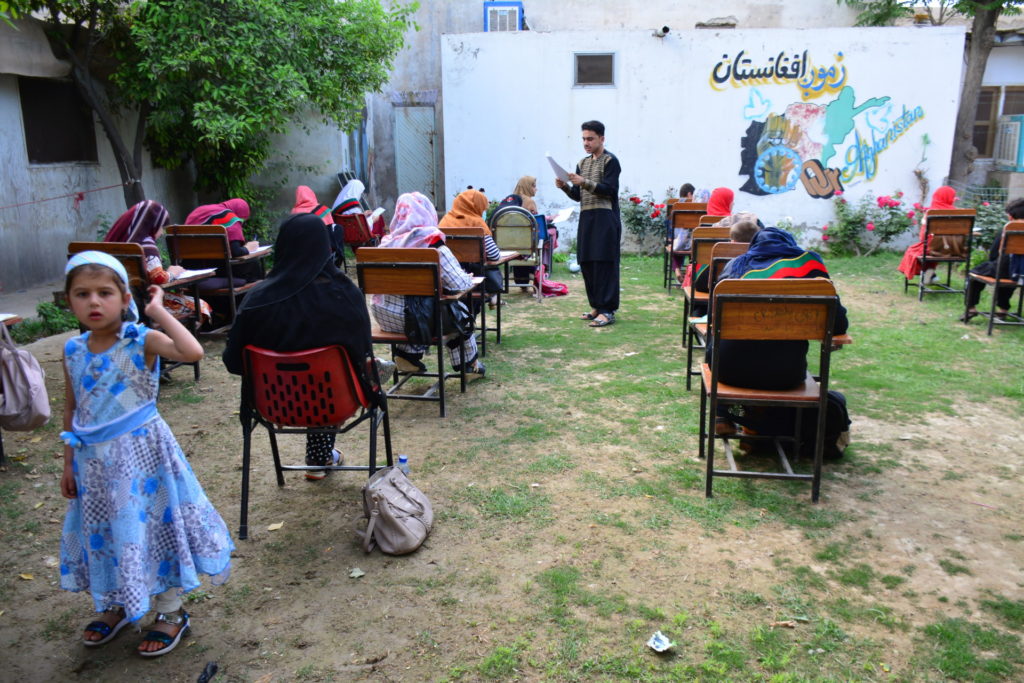
Women have suffered physically and psychologically during four decades of war. Issues like rights to education, work and freedom of movement are major concerns for Afghan women. But it’s the men who are negotiating the peace deal again, and women fear that it might be at the expense of their rights. Women’s rights, and human rights in general, occupy a secondary position for many at the negotiating table. There are only four female negotiators (Habiba Sarabi, Fatima Gailani, Fawzia Koofi and Sharifa Zurmati Wardak) representing Kabul in peace negotiations with the Taliban out of the 25-strong delegation of the Islamic Republic of Afghanistan in Doha, and they have little influence.
The Afghan traditional patriarchal system is intact in the conservative society, and the life of women in rural areas has changed little since the Taliban era. However, in Kabul and other urban centers, some progress has been made. According to the Ministry of Education, over 9 million children are enrolled in schools, including over 3.5 million girls. Two decades ago, there were only 3,000 schools in Afghanistan, but now 18,000 schools are active. There are 102 female lawmakers among the 352 members of the two houses of the Afghan Parliament. Women also hold positions in the judiciary, the army and the police. Some even became governors.
Aamira, a student who is preparing for a TOEFL (Test of English as a Foreign Language) at KIMS, is skeptical of the Taliban’s promises. “They are just pretending to sign the treaty. They will do anything they want,” she said.
But Hamayoon Amiri, the KIMS manager, thinks the Taliban may have changed in the last two decades. “Some of the Taliban speak English. They know computers. Maybe today’s Taliban are not the Taliban they were 10-20 years ago,” he said.
The pandemic put a strain on the center as it was forced to close last year. It is now going through financial turbulence. Many students left the center as their parents couldn’t pay the fees anymore.
“In the last few years no one has helped us. We need help from the government. Without it we can’t teach the students,” Amiri added. The center charges a monthly fee of 200 Afghani ($2.50 U.S.) for computers, 200 Afghani for English lessons and 300 Afghani for transportation.
But the bigger worry is the security situation, which has deteriorated dramatically in the last few months. Hamayoon is worried he may have to close the center again.
Afghanistan is moving toward a more violent and uncertain time ahead.
Since U.S. President Joe Biden’s announcement in April to end the Afghanistan war, the Taliban have made significant gains all over the country. The militants have captured 219 districts, 54% of the total. Interestingly, the militants have gained significantly more ground in northern Afghanistan — a stronghold of the Northern Alliance, a U.S.-allied group of warlords — and an area dominated by Afghanistan’s ethnic minorities. It was a strategic move by the Taliban and a psychological blow to the government led by President Ashraf Ghani. As the Taliban sweeps across the north, hundreds of demoralized security forces have fled to Tajikistan, and many surrendered after negotiations. In many districts, the Taliban are not facing much resistance from the Afghan government forces, which the U.S. and allied armies built and trained.
Afghan security forces work in hostile environments in urban centers and remote areas with meager salaries and without proper food, weapons or support. The Afghan government no longer publishes data on fallen soldiers, but Ghani in 2019 said that more than 45,000 members of the security forces have been killed since 2014. In June alone, more than 700 Afghan troops were killed; 233 more died in the first two weeks of July.
In a recent surge of fierce fighting, the Taliban captured Zharey and Panjwai, two districts that neighbor Kandahar. Capturing Panjwai is a symbolic victory for the movement as the Taliban’s current leader, Mawlawi Haibatullah Akhundzada, hails from there. Following the Soviet invasion, he migrated to Quetta with his family. After working in various positions, he succeeded to the leadership of the group after the 2016 assassination of Mullah Akhtar Mohammad Mansour in a drone strike. Panjwai made the news in 2012, when American sniper Robert Bales killed 16 Afghan civilians, including nine children and four women, in the village of Najiban. Over the past few months, the clashes between armed fighters and Afghan soldiers in several districts around Kandahar — Arghandab, Spin Boldak and Panjwai — have intensified. Spin Boldak district, which borders Pakistan, is now under the control of the Taliban. According to the Afghanistan Independent Human Rights Commission, the Taliban has killed at least 40 civilians in the district.
Inside Kandahar, life looks normal: Shops are open, vegetable and fruit markets are running, men drive their bikes, and women ride pillion in blue burqas. But there is a palpable sense of unease. Since the U.S. invasion, the city has been transformed by the inflow of dollars, with new parks, roads, buildings and shopping complexes as well as more cars and cricket tournaments springing up. Yet Afghan soldiers on Humvees patrol the city, and snipers on watchtowers keep an eye on everyone at government-controlled places. Eateries and restaurants remain open at night, though armed robberies and other crimes have increased. Despite everything, however, one also gets a sense of resilience.
On the outskirts of the city, Aino Mina is a place of leisure for many Kandaharis, a place where they discuss cricket, politics, business, marriage, even conflict and violence. Aino Mina is an affluent housing development built by former President Hamid Karzai’s brother Mahmoud Karzai. The neighborhood is largely built on U.S. contracts, land grabbing and corruption. It is spacious and clean, with tree-lined streets, sidewalks and parks where men gather with their hookah to chat, pray, smoke hash, and play Ludo and chess. Women have separate areas to sit. There are mosques and shopping malls, multimillion-dollar mansions in the background of rocky mountains, huge empty fields, heavily armed National Directorate of Security (NDS) soldiers checking every passing bike or car. After every Friday prayer, hundreds of people on bikes and in cars flock to the area for weekly picnics; some also drive around the city and take selfies in front of fountains and monuments. In more peaceful times, they would have headed to Arghandab for a picnic. Now driving toward Arghandab is dangerous, and sounds of gunshots can be heard from the government-controlled checkpoints.
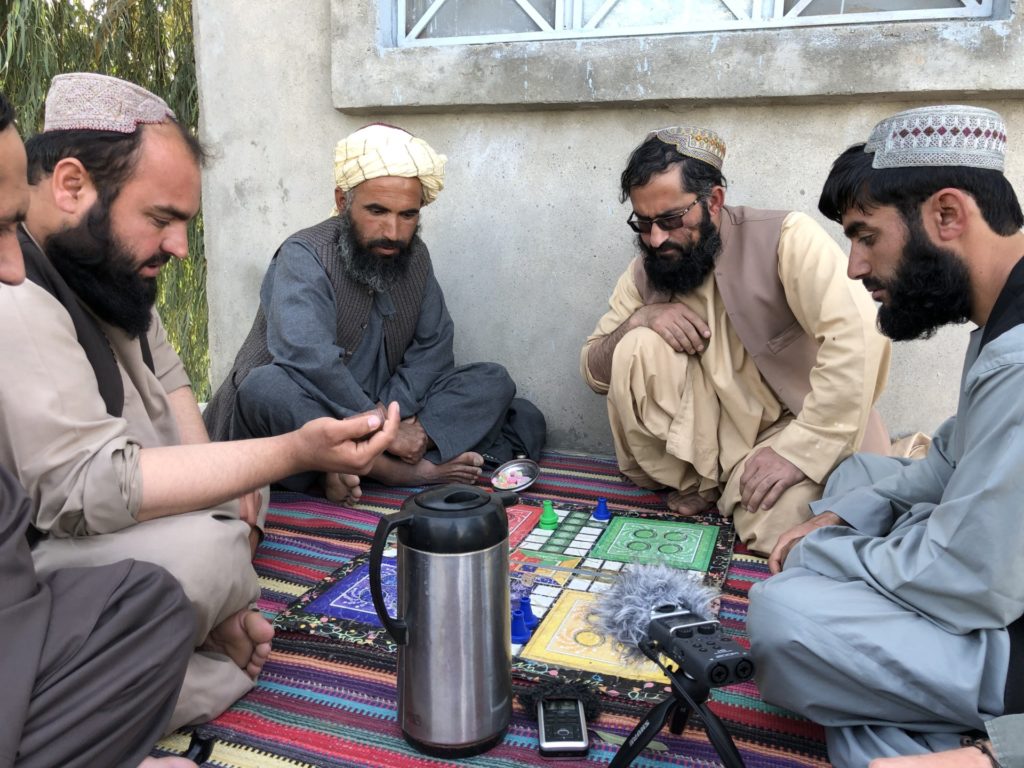
Mahmoud Nasim, a dried fruit seller from the city, was in Aino Mina to enjoy the Friday afternoon and sit with his friends and play Ludo. A small carpet was rolled out on the sidewalk under the shadow of a tree with the board game in their midst. Similar scenes repeated every few yards for miles. Everyone had a large thermos of saffron tea and a bowl of toffees next to them. Friends and children surrounded and followed the course of the game with fascination.
Nasim used to go to Dahla Dam in Arghandab, which is 25 kilometers (16 miles) away from Kandahar. Arghandab, which borders Panjwai district, is famous for its grapes and pomegranates. But now it is a site of fierce fighting between the Taliban and government forces. The insurgent group recently captured Dahla Dam, the country’s second largest, which provides drinking water for people in the city and irrigation to farmers.
In its birthplace, the Taliban are still more popular among the people, especially men, than the Western-backed Kabul government. Though Nasim is afraid that the Taliban will take over the city, he doesn’t care who is going to rule over the country anymore. “We are hardworking, poor people; it’s difficult enough for us to run our home. Whoever is beneficial for this country and for us, we will welcome them,” Nasim said.
Afghans are tired of never-ending conflict, and many say they will support whoever ends the war.
Afghans are tired of never-ending conflict, and many say they will support whoever ends the war. According to the International Committee of the Red Cross, Afghanistan is one of the deadliest places in the world, with around 50% of the population, or 17 million people, directly affected by armed conflict. According to the United Nations Assistance Mission in Afghanistan (UNAMA), there has been an increase in civilian casualties this year. More than 570 Afghans have been killed, and 1,210 were injured from January to the end of March. The number of civilians killed or injured increased by 29% compared with the first quarter of 2020. According to the report, the Taliban are responsible for almost 45% of all civilian casualties and 17% of casualties among the Afghan national army. Since 2009, when UNAMA started recording civilian deaths, over 38,000 Afghan civilians have been killed.
Nasim’s game partner Yaqoub hails from Arghandab, and he is worried about the security situation. But since he doesn’t work for the government or the army, he believes the Taliban won’t harm him. He is not worried about the Taliban’s return to power in Kandahar.
“At the moment you can’t even park your motorcycle in Kandahar without fear of it being stolen. That would not happen under the Taliban,” said Yaqoub, who is unemployed. He is angry at the Afghan government’s inability to create jobs and eradicate poverty.
According to the Asian Development Bank’s latest report, in 2020 47% of the Afghan population lived below the national poverty line, compared with 36% in 2007. In its recent report, Oxfam has called Afghanistan one of “the worst hunger hot spots” in the world. Since the pandemic increased unemployment and the prices of basic items, there are more women and children begging in the streets. The pandemic year witnessed a 17% rise in extreme hunger in Afghanistan.
A third player joined the conversation. Mohammad Rasool, a bulky man in his mid-40s, is a teacher. “Every government has its weaknesses,” he said. However, he added, the security situation was better under the Taliban, and the judicial system was swifter. “Every family dispute, every theft was settled in the Taliban courts,” he explained.
Today, the judiciary is plagued with corruption, and judges have lost credibility. According to Transparency International, 60% of Afghans consider the judiciary the most corrupt organ of the government. In Afghanistan, 80% of disputes are still resolved outside the formal judicial system by jirgas, shuras and religious leaders. Afghanistan also ranked 165 out of 180 countries in Transparency International’s 2020 Corruption Perceptions Index. And, according to the organization, corruption increased during the pandemic.
With the government’s failure on security, poverty and corruption, the Taliban are filling the vacuum and providing a sense of stability with their strict laws. Many fear that Afghanistan is again on the verge of a civil war. The emergence of armed militia under different warlords could slow the Taliban’s advances, but recent setbacks in hundreds of districts and the departure of foreign forces is affecting the morale of the Afghan soldiers.
Even as deadly clashes continue between Afghan forces and the Taliban outside Kandahar, the province’s governor, Rohullah Khanzada, promises that the city will never fall into the hands of the Taliban. The governor’s fortified palace is in the middle of the city, with every door guarded by soldiers. The entrance is barricaded with several roadblocks.
Despite such strict security, however, the governor’s secretary, Mansour Ahmad, was killed on July 4, in a bomb blast in the parking area inside the governor’s compound. The blast happened near the recently built tomb of former police chief Gen. Abdul Raziq, who was assassinated by his own guard in 2018. Human Rights Watch had declared Raziq “torturer-in-chief” for his abysmal human rights record.
“The Afghan army is stronger than the Taliban,” the governor insisted. He is convinced that in battlefields, the Taliban are inferior to the government troops. He accuses Taliban militants of hiding in civilian homes or blowing themselves up in cars, harming common Afghans. The Taliban gains are all propaganda, according to the governor.
But the realities on the ground are different. In the second week of July, Taliban fighters entered Kandahar’s Seventh Police District (PD7) and engaged with the security forces in a clash that left 18 dead and more than 100 wounded. Thousands of families are displaced and sheltering in the city because of the fighting throughout the province. Government troops allege that the militants have seized residential neighborhoods, forcing civilians to flee.
“They are only active in a few villages,” the governor said, maintaining his bravado. “The cities in Kandahar Province are firmly in the hands of the government.”
Kandahar city is under siege, whether the governor likes to believe it or not. And the fighting has displaced more than 22,000 families in July alone.
A few kilometers outside the city are camps for Internally Displaced Persons (IDP), where countless mud houses shelter thousands of families forced to live without the basic necessities of water, electricity and health care. Most of them fled because of the conflict and are now dependent on the aid provided by the NGOs, who are facing a shortage of funds because, with the impending withdrawal of foreign troops, international aid to Afghanistan has fallen. According to Amnesty International, there are 4 million IDPs in Afghanistan. While living in the camps, these faceless and unheard victims are forced to beg or work for meager wages. Children mostly play or roam around the camps. Women must walk far to collect water.
Shekiba was kneading dough one afternoon in her Arghandab home when her husband, Agha Mohammad, came home and asked her to get ready to flee to Kandahar. The fighting in their hometown had intensified, so they gathered their four children and fled. They have been living in the Hakim Ada camp for IDPs under appalling conditions for the past four months. Arghandab has since been taken over by the Taliban. Agha Mohammad, who was a farmer, now has no work.
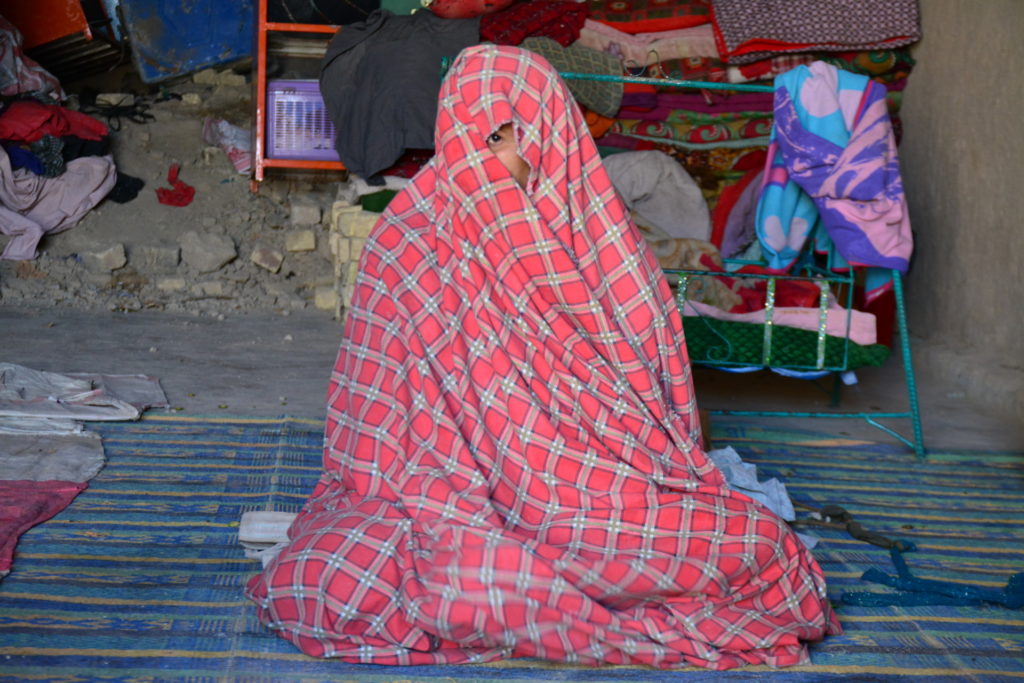
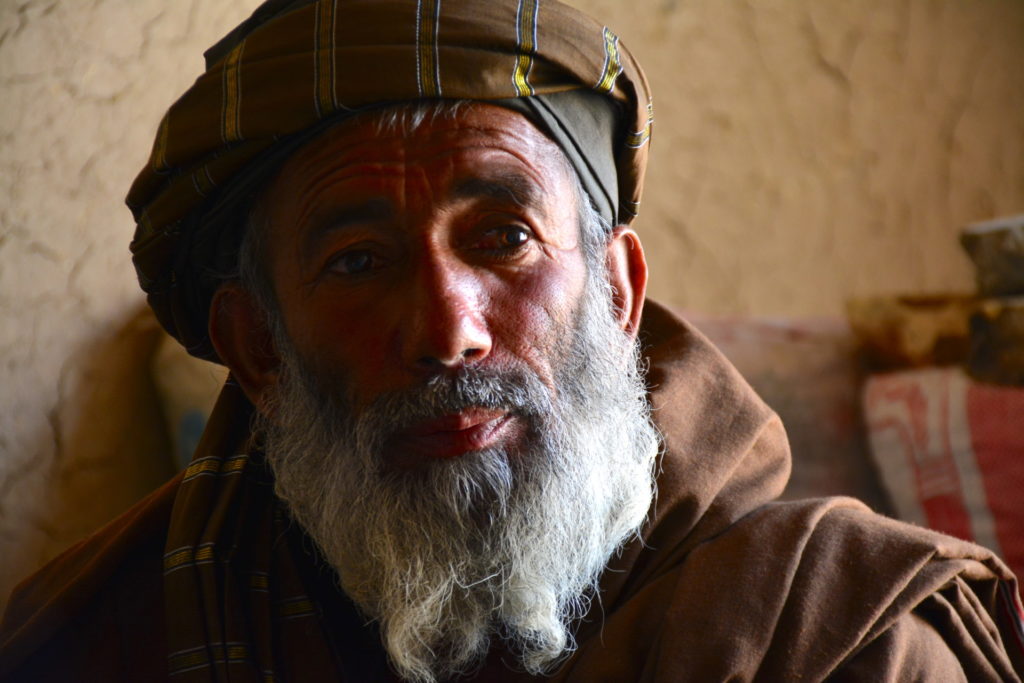
The family of six could pack only a few belongings before they fled to Kandahar on a motorcycle. The escape was dangerous. They were caught in the crossfire at the checkpoints. Both sides are full of suspicion. “You could be arrested by the Taliban or by the government forces if they suspect you of being a spy,” Mohammad said. The family now shares an abandoned mud bakery with another family.
“Look how many parliamentarians Kandahar has, but none of them have served the people,” Mohammad lamented. “Everyone has witnessed how much foreigners helped us, but all the money was stolen.”
The U.S. invasion spawned a new class of rich Afghans, the war allies who gained access to contracts with the invading military, embezzled project funds and funneled billions of dollars from illegal mining. They are living high in Dubai or in the West, owning shopping malls, private banks, hotels, wedding halls and real estate businesses. Their money enables them to manipulate elections. They can easily be spotted in Kabul in their heavily armed caravan of vehicles. The Afghan police guard their villas.
“Despite these things, they want us to vote for them!” Mohammad said.
Recently, a group of high-ranking Afghan politicians met the Taliban in Doha to revive the stalled peace talks. After the meeting, the two sides issued a joint statement in which they agreed to continue the talks. The talks again fell short of meeting Afghan’s expectations. In a recent interview Shaheen, also a member of the group’s negotiating team, warned that there won’t be peace in Afghanistan until a new negotiated government, acceptable to all sides, is installed in Kabul and Ghani is removed. It’s not clear, however, what kind of a new government the Taliban have in mind. Will there be elections? Or will an emir rule the country? Or will it be a hybrid system like Iran’s?
These negotiations seem far removed from the concerns of ordinary Afghans.
“One afternoon, nine Taliban came to my house and asked for food. But how can I feed them when I am struggling to feed my own children?” Mohammad asked. “The government is killing civilians with their bombs from air, the Taliban are hiding in mosques and firing from there without warning the civilians.”
He is exasperated and doesn’t care about the form of government: “We just want peace.”
Shekiba interjected: “The Taliban era was not a good time. They beat women and cut men’s hair that was too long. Everyone was afraid of them. They could kill everyone if they are ruling over the city or the country. They may take out everyone from their houses and may cut down their throat; it doesn’t matter for them if you are a civilian or not.”
She is angry and cursed Pakistan and Iran for supporting and providing weapons to the Taliban.
“They made widows of Afghan women. They are taking sons from their mothers,” Shekiba added.
Shekiba doesn’t want the Taliban to come back to power. But she is afraid that Kandahar could fall back into their hands.
“We don’t have any choice, we can’t move, we surrender ourselves to God; he will decide whether to keep us alive or dead.”
More than Taliban rule, the family is afraid of another civil war. During the last civil war they fled to Pakistan, which they can no longer do today. They simply have no money to flee. Pakistan has closed the Torkham terminal, a key border crossing with Afghanistan, and the fencing of the 2,640-kilometer (1,637-mile) land border is meant to deter an influx of refugees. Countries like Russia, Iran, China, Pakistan and India will likely interfere in the conflict, and their rivalries will lead to more bloodshed and anarchy in the country. And that is exactly what could happen again if the foreign soldiers withdraw without ensuring peace in the country, Agha Mohammad fears.
The elite hide behind the thick and tall blast walls made of concrete while the poor lie vulnerable in their tents and mud walls.
Ordinary Afghans have no say in the peace process, nor can they stop the war. They are stuck between different forces and different countries with competing interests. They are both victims and spectators. The battle lines are now more blurred than ever. To stay alive, an ordinary Afghan has no room for error. Here, the elite hide behind the thick and tall blast walls made of concrete while the poor lie vulnerable in their tents and mud walls. These walls have created impenetrable barriers between the rulers and ruled. The palace dwellers have little regard for the hardships or the concerns of ordinary Afghans.
“People say Afghanistan can’t escape war because its citizens are uneducated. But are Ghani or the Taliban leaders uneducated?” asked Mohammad.



